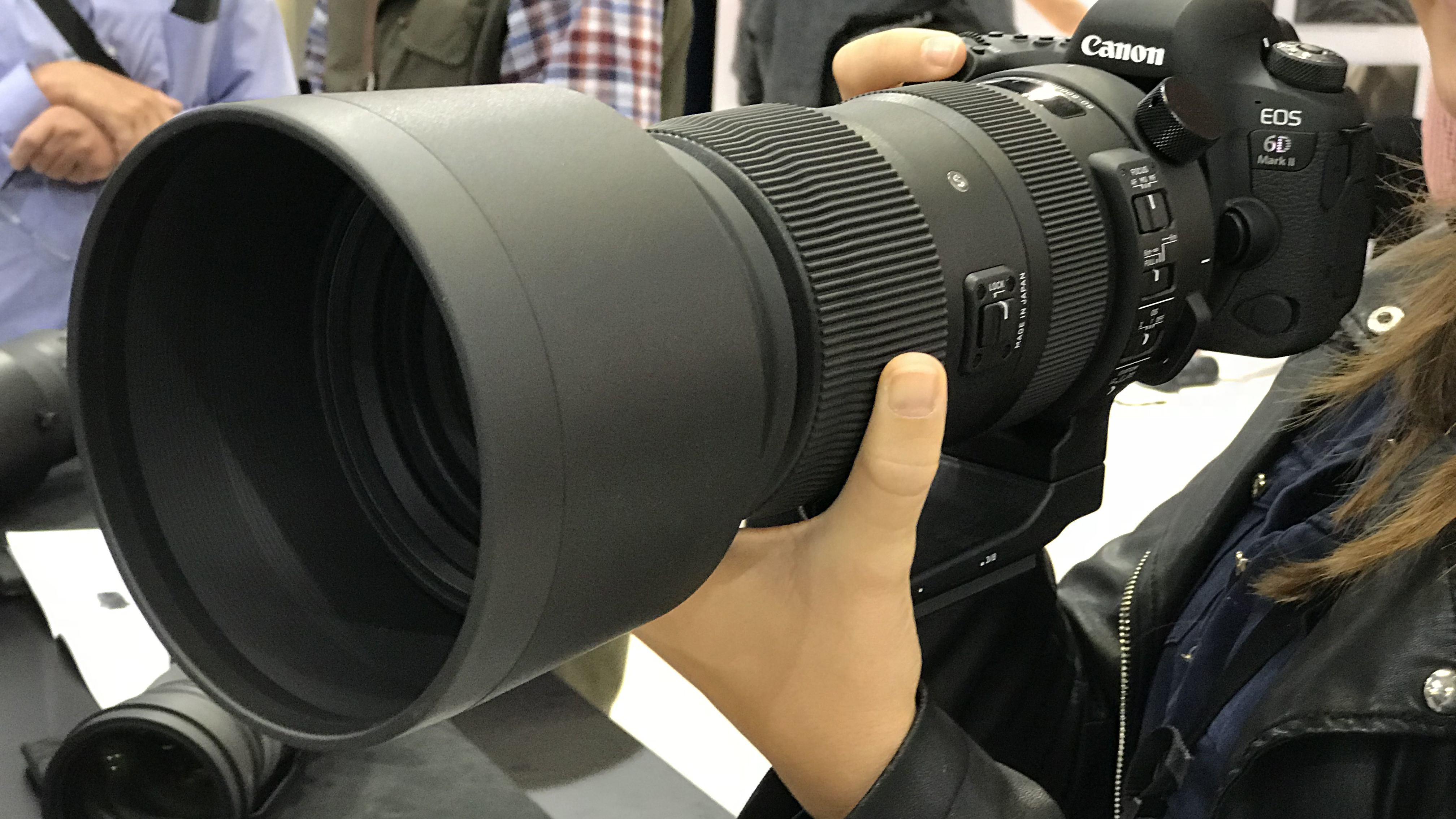Early Verdict
A busy exhibition hall at Photokina 2018 was not the place to test in properly, however, so we’ll have to wait until a full review sample becomes available. However, it looks like the Sigma 60-600mm f/4.5-6.3 DG OS HSM | Sports could be the perfect super-telephoto superzoom for sports and wildlife fans who just want to carry a single lens.
Why you can trust TechRadar
The specification for the Sigma 60-600mm f/4.5-6.3 DG OS HSM | Sports doesn’t sink in straight away. It looks and sounds like the company’s popular 150–600mm f/5-6.3 DG OS HSM | Sports lens, but this new model’s shorter minimum focal length is the killer feature here. It makes the Sigma 60-600mm the first ever 10x zoom with a 600mm maximum.
It comes with Nikon F, Canon EF and Sigma SA mounts (we tried it out with a full-frame Canon body) and from the outside it doesn’t look so very different to the 150-600mm lens.
Inside, though, it features a sophisticated optical construction consisting of no fewer than 25 elements in 19 groups, with three FLD (low dispersion) and one SLD (special low dispersion) element to control chromatic aberration and maintain high resolution and consistent edge to edge sharpness.
In fact, Sigma says the new 60-600mm lens offers the same level of image quality as its highly regarded 150–600mm f/5-6.3 DG OS HSM | Sports lens.
Build and handling
It’s no surprise that the extended focal range and complex optical construction make the 60-600mm a pretty big, weighty lens. But even though it tips the scales at 2.7kg, it feels relatively light for its physical size, so although you wouldn’t want to hand hold it all day, its fine for short periods.
The upgraded image stabilisation system should help cut wobble in longer range shots, and the viewfinder image did look pretty steady at full zoom. Sigma claims a 4-stop advantage for its ‘intelligent’ OS system; mode 1 is for regular use and there’s a separate mode 2 for panning shots.
Much of this lens’s length comes from its large circular lens hood. This can be loosened and detached via a locking knob, but you’d probably want to keep it on to reduce flare and protect that big front element – though it is coated repel water and oil.
Sign up for breaking news, reviews, opinion, top tech deals, and more.
The construction is part magnesium alloy and part composite material. This presumably helps with weight and cost but doesn’t feel like it detracts from the handling. The zoom action has just the right amount of stiffness and no tight spots. The switchgear is clearly labelled and also has a good quality feel.
You can loosen the tripod collar to change its angle for portrait shooting, for example, but it doesn’t detach.
This is a big lens, but surprisingly wieldy given its physical size and focal range.



Performance
We’ll need to try this lens in a range of conditions to get a proper idea of the effectiveness of its stabilisation system. If it really does achieve the same image quality as the 150–600mm f/5-6.3 DG OS HSM | Sports lens, it will be a major achievement – a busy exhibition hall was not the place to test in properly, however, so we’ll have to wait until a full review sample becomes available.
First impressions of Sigma’s HSM (Hypersonic Motor) AF system are good. It’s pretty quite, given the size of the lens units involved, though hunted a little with big distance changes in the indoor lighting at Photokina 2018 – the focus limiter mode should help here, and proper outdoor lighting will be a much better test.
Early verdict
This looks like the perfect super-telephoto superzoom for sports and wildlife fans who just want to carry a single lens. If the performance matches up to the handling and feel, Sigma should have a winner on its hands.
Photokina is the world's biggest photography show, and TechRadar is reporting live from Cologne to bring you all the big announcements, plus hands-on reviews of new cameras and kit. Keep up with all the news here.

Rod is an independent photographer and photography journalist with more than 30 years' experience. He's previously worked as Head of Testing for Future’s photography magazines, including Digital Camera, N-Photo, PhotoPlus, Professional Photography, Photography Week and Practical Photoshop, and as Reviews Editor on Digital Camera World.
What is a hands on review?
Hands on reviews' are a journalist's first impressions of a piece of kit based on spending some time with it. It may be just a few moments, or a few hours. The important thing is we have been able to play with it ourselves and can give you some sense of what it's like to use, even if it's only an embryonic view. For more information, see TechRadar's Reviews Guarantee.
